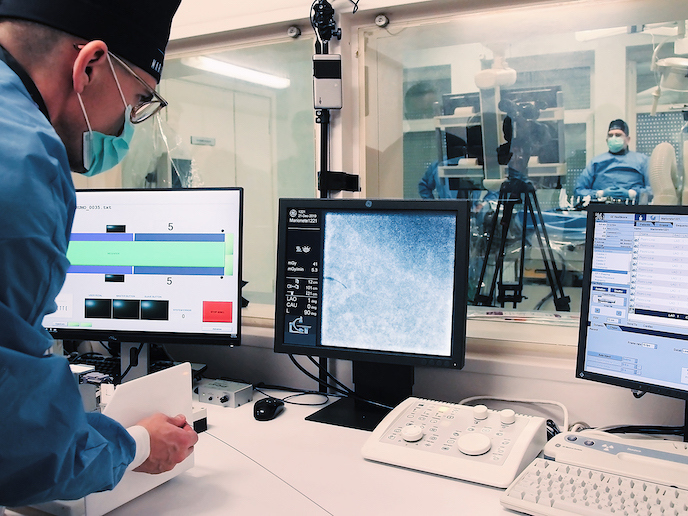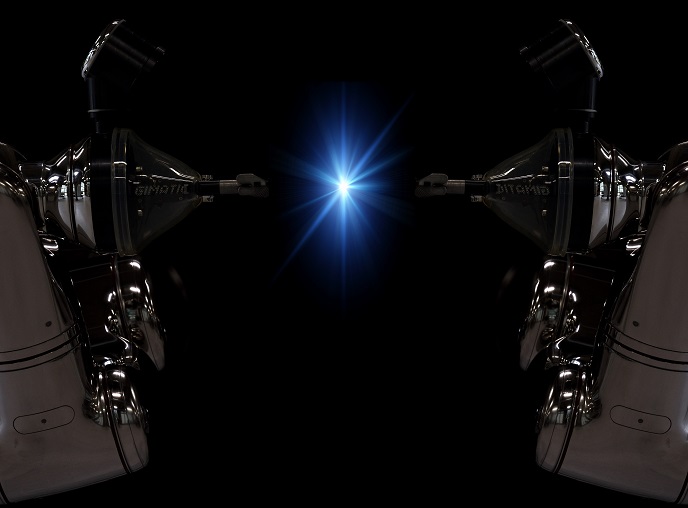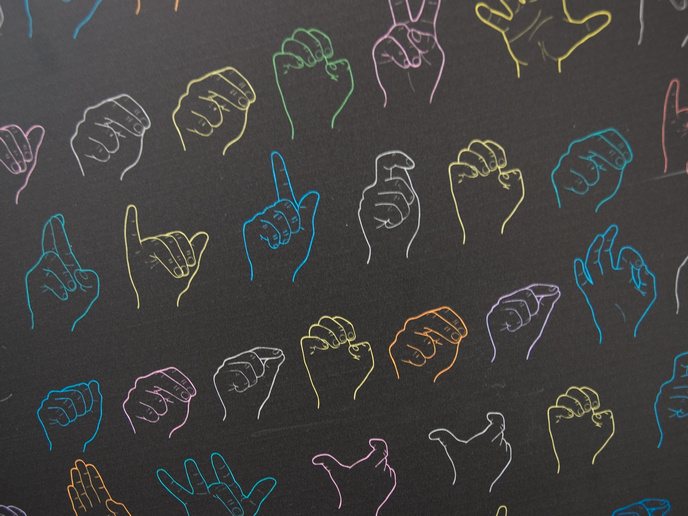The robotic catheter with a feel for vascular surgery
Vascular surgery can be risky, and not just for the patient. Surgeons use X-ray equipment to guide fine catheters through the patient’s arteries, exposing them to significant levels of radiation. “If you look at history, many of the innovative leaders in this field, who pushed the limits, died from cancer,” says Tomas Baltrūnas, vascular surgeon at Vilnius University Hospital in Lithuania and HAPGuide project lead. Patients may only go through these interventions once or twice in their lifetime, whereas the surgeon performs several operations per day. Although measures are taken to reduce the surgeon’s exposure, he adds: “At the end of the day, the doctor is still standing near an X-ray machine and is gathering all that harmful radiation.” One way to reduce this exposure is using remote surgical techniques. “Everybody calls them robots, because it’s more fancy, it sounds better,” says Baltrūnas. “Really they are just replicating the movements of the surgeon.” This arrangement also means surgeons can work without heavy lead aprons, which can be restrictive and uncomfortable. However, remote surgery equipment is typically operated using a video game controller and visual feedback, robbing the surgeon of their finely tuned sense of touch. “You lose all those skills you have spent thousands of hours developing,” says Baltrūnas. To address this, he started www.inmed.lt (Innovative Medicine), a start-up which brings together a multidisciplinary team with experience in medicine, robotics, product design, commercialisation and business development. Their goal is to create vascular telemedicine equipment with haptic feedback, which they call HAPGuide. “We are creating the opportunity for doctors to operate in the same manner as they have already been trained to,” adds Baltrūnas At the heart of the HAPGuide is a single-use cassette that contains a specialised catheter packed with pressure sensors. These relay forces exerted on the probe to the surgeon operating the equipment via remote control, helping them to feel their way through the vascular system. The system is compatible with standard endovascular instruments, avoiding the need for expensive proprietary catheters. As well as the specialised probe, the HAPGuide package includes guidance equipment, training software and annual maintenance. Over 5.5 million keyhole surgeries for conditions such as atherosclerosis are performed across the EU and United States every year. This represents a EUR 4 billion market opportunity for HAPGuide, in addition to the possibility of using the equipment in other areas of medicine, such as brain surgery. Baltrūnas says the HAPGuide is still under development, and likely to be certified in around 2 years. In the future, he hopes to develop the use of the equipment in telemedicine and build partially automated functions for it via machine learning. “I am still quite intensively working as a vascular surgeon,” says Baltrūnas. “The idea is to be in this field and feel what doctors need the most. Not to create a fancy tool or toy, but to fill the gap where there is a need.”
Keywords
HAPGuide, keyhole, surgery, robotic, radiation, haptic, feedback, catheter, atherosclerosis







